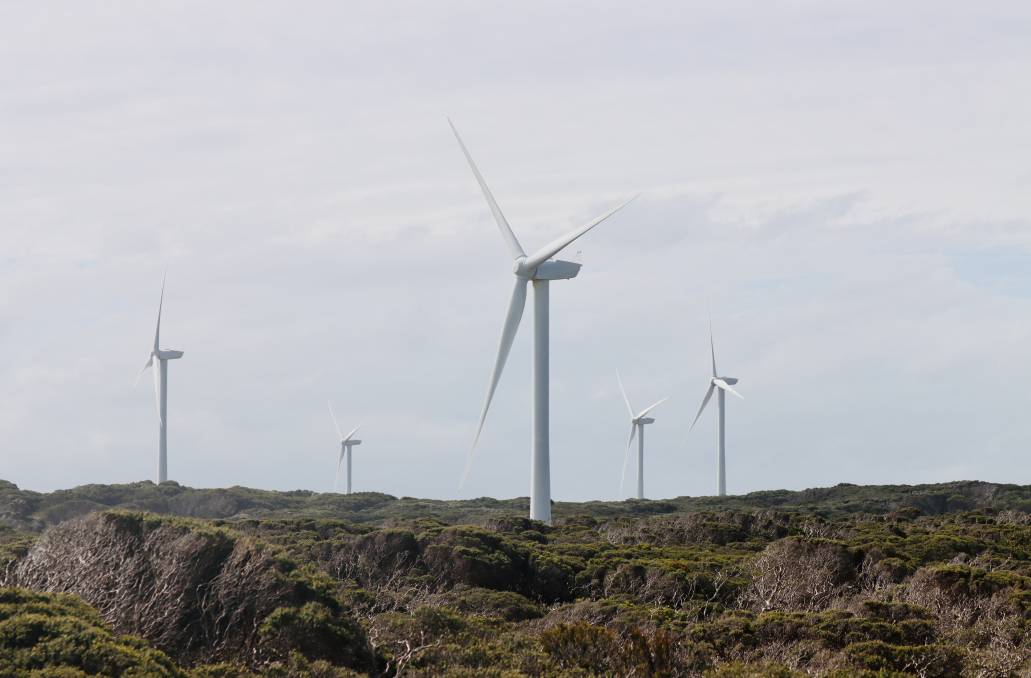 By B.N. Frank
By B.N. Frank
Opposition to, complaints about, and lawsuits filed against wind turbines and farms are likely to increase worldwide until significant biological, economic, environmental, and safety issues – including fires (see 1, 2), noise, and toxic emissions – are eliminated or greatly reduced (see also 1, 2, 3, 4, 5, 6, 7, 8, 9, 10, 11, 12, 13, 14, 15, 16, 17, 18, 19, 20, 21, 22). Recently a lawsuit filed due to health complaints led to two turbines being demolished in Massachusetts. An increase in wildlife deaths now have councillors voicing concerns and seeking solutions in Moyne Shire, Australia.
From Wind-Watch:
Moyne Shire councillors worried about number of dead bats at wind farm

The Salt Creek Wind Farm has been killing dozens of Grey-headed Flying Foxes, which are listed as vulnerable. Picture by Justine McCullagh-Beasy
Councillors say they are worried about the number of dead bats being found at a wind farm in the north-east corner of Moyne Shire.
The issue arose as councillors reviewed the second-year report of the Bat and Avifauna Management (BAM) Plan for the Salt Creek Wind Farm at the September council meeting.
The report showed 67 bat carcasses had been found during the wind farm’s second year of operation.
Council energy project manager Michelle Grainger said that was an increase on the year-one deaths.
“The second year of reporting has showed increased mortality for both birds and bats, probably an increase of three or four per cent,” she said.
The report said the most worrying element was that 13 of the carcasses were grey-headed flying foxes, which were listed as vulnerable. “Other than the grey-headed flying foxes most of the species aren’t of concern because they’re not an endangered or threatened species,” Ms Grainger said.
The report said the true number of flying fox deaths caused by Salt Creek turbines was probably more than triple the number of carcasses found by searchers.
Cr Damian Gleeson said he wasn’t comfortable with the rise in deaths.
“This isn’t a report that you’d read to your kids … 67 carcasses … I want to see action and ensure that mitigation is going to take place,” he said.
Cr Gleeson asked who had responsibility to keep the deaths under control. Ms Grainger said the Department of Environment, Land, Water and Planning provided technical expertise, but it was the council’s job “to administer and enforce the planning permits” for the wind farms.
Cr Gleeson said the council needed to start taking that job more seriously.
“I think it’s about time we started caring,” he said.
“If this time next year report three comes through and it’s 150 (deaths), I’ll be saying you’ve got to turn your turbines off at night time.”
Cr James Purcell suggested that rather than “endorse” the report, the council should “accept” it and wait to see whether flying fox deaths rose in the next report.
Grey-headed flying fox numbers have suffered in recent years because of mass deaths caused by heat stress, which is why it is now listed as vulnerable, making any additional turbine-related death a “significant impact”.
The flying fox deaths at Salt Creek forced the wind farm developer, Tilt Renewables, to create a specific grey-headed flying fox management plan, which lists a range of “potential mitigation measures”.
The measures deemed worthy of further investigation included logging nearby Sugar Gum forests (which are a favourite tree of the flying fox), periodically turning off the turbines, and offsetting turbine-related deaths by limiting flying fox deaths from heat stress.
Investigations found that cutting down or lopping local Sugar Gums was “not likely” to limit flying fox activity around the wind farm, while turning off the turbines risked the facility’s power production capacity and was not proven to prevent flying fox deaths.
The most appealing and effective strategy according to Tilt, and endorsed by DELWP, was to accept a level of turbine-related deaths, but save far more flying fox lives by keeping them cool in summer.
Under the strategy, Tilt would spend $210,000 to fund a nine-year grant program for measures that would cool down flying fox habitats, even including specially built sprinkler systems.
Source: By Ben Silvester – September 11 2022 – standard.net.au
Activist Post is Google-Free
Support for just $1 per month at Patreon or SubscribeStar
Activist Post reports regularly about wind power and unsafe technology. For more information, visit our archives.
Top image: Pixabay
Become a Patron!
Or support us at SubscribeStar
Donate cryptocurrency HERE
Subscribe to Activist Post for truth, peace, and freedom news. Follow us on SoMee, Telegram, HIVE, Flote, Minds, MeWe, Twitter, Gab, What Really Happened and GETTR.
Provide, Protect and Profit from what’s coming! Get a free issue of Counter Markets today.

Be the first to comment on "Legislators Concerned about Dead Bats, Birds, Vulnerable Species at Wind Farm; “I think it’s about time we started caring”"